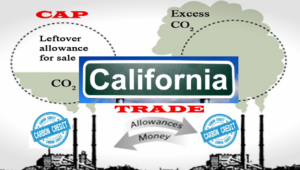Trade Carbon Credits
Carbon markets are trading systems that enable companies to compensate for their greenhouse gas emissions by buying credits from entities that reduce or offset those emissions. One tradable credit represents one tonne of carbon dioxide or the equivalent in other greenhouse gases reduced, sequestered or avoided.
A wide variety of projects produce trade carbon credits. There are also a number of different standards and certifications to verify that projects meet their stated objectives. Some examples include the Gold Standard, Climate Action Reserve, Verified Carbon Standard (VCS), Architecture for REDD+ Transactions and American Carbon Registry. The voluntary carbon market has become increasingly important as governments around the world set targets for reducing carbon emissions. The market is characterized by many different types of participants including traders, brokers, project developers and third-party verifiers.

There are two major categories of carbon credits: emission reduction and removal. Emission reduction projects capture or sequester carbon, typically by planting trees or capturing and storing it in soil. They can be nature-based, such as afforestation or reforestation projects or tech-based, such as biomass combustion with carbon capture and storage (CCS) projects. Carbon credit prices tend to trade at a premium for nature-based projects that generate additional co-benefits.
Who Can Trade Carbon Credits?
Carbon credits can be traded on a number of exchanges, both in the voluntary and compliance markets. Exchanges generally have standardized products that can be purchased and sold as part of a bundled portfolio of credits or for forward delivery. Traders buy large numbers of carbon credits from producers and then package them into portfolios for sale to end buyers. They often charge a commission for their services.
Some of the largest buyers in the market are financial players such as banks, insurance companies and pension funds. They are looking to diversify their investment portfolios with green investments or hedge against the risk of higher fossil fuel costs and the need to comply with new carbon regulations. Other buyers are companies that are set to reduce their own carbon emissions and want to purchase carbon credits as a way of meeting those goals.
As demand for carbon credits continues to grow, there are a number of potential challenges that could affect the integrity of the market. One is the difficulty in matching buyers and sellers, especially given the broad range of credit attributes. Creating standard attributes and a common taxonomy to describe them would make it easier for buyers to identify suitable credits and sellers to offer them.
Another concern is the risk of fraudulent carbon trading and money laundering. In order to minimize this risk, it is important that the verification process is made more streamlined and transparent. Some solutions include setting up a digital process for carbon verification that can reduce issuance times and costs, speed up payment terms, enable traceability of credits and improve credibility of corporate claims about the use of carbon credits. Platts collects bids, offers and trades in the carbon credit market every day. Our price assessments are based on the latest bid and offer data from our brokered market and on trades reported by the exchanges.